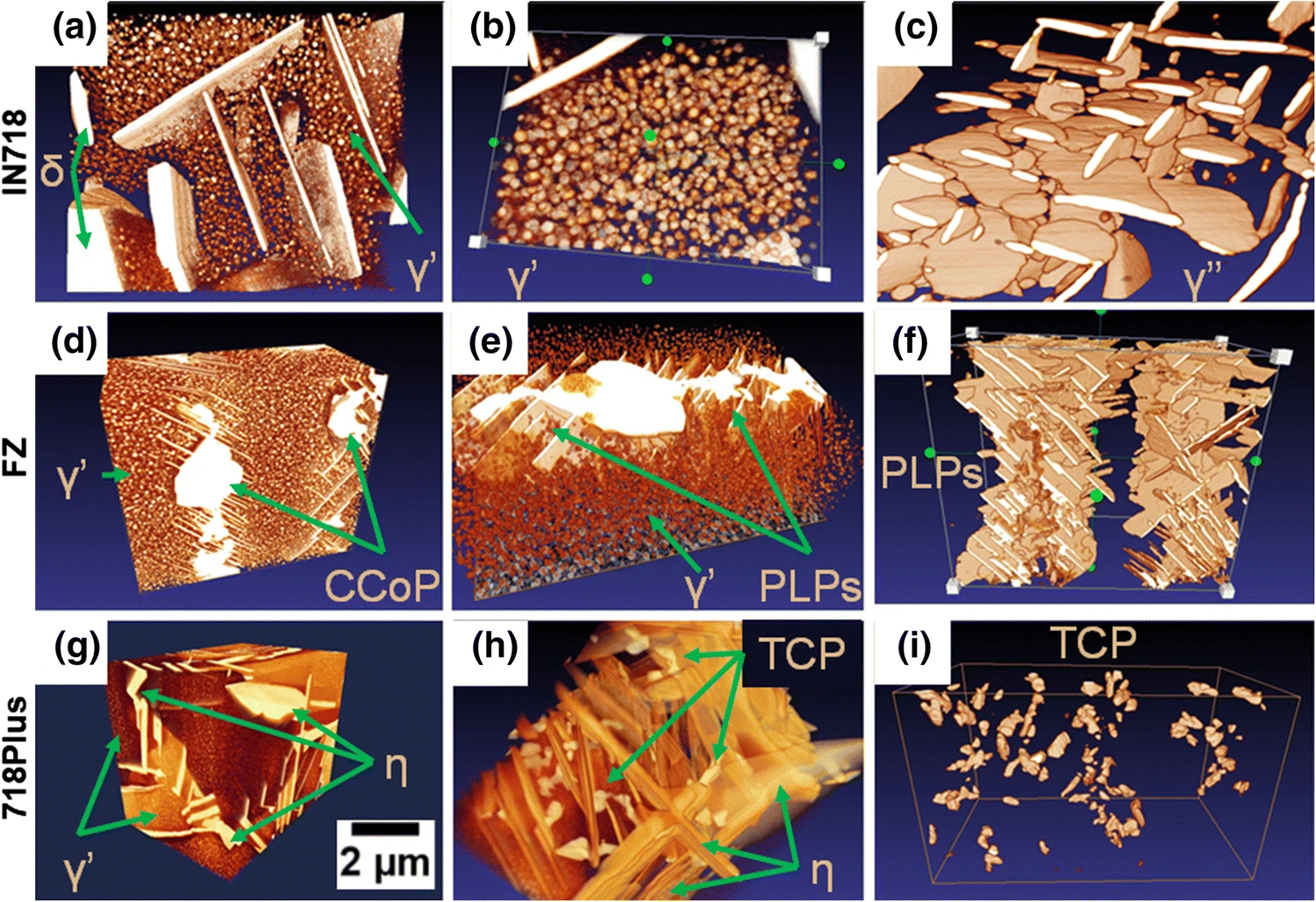Influence of Isothermal Holding on the Microstructure and Mechanical Properties of Electron Beam Welded Dissimilar Inconel 718/ATI 718Plus® Joint

Inconel 718 (IN718) is the most popular precipitation-strengthened nickel-based superalloy introduced by the Huntington Alloys Division of INCO in 1959 (Ref 1). The IN718 is strengthened mainly by body-centered tetragonal γ″-Ni3(Al, Ti, Nb) phase and face-centered cubic γ′-Ni3(Al, Ti) phase. Its remarkable properties, including high strength, corrosion resistance, excellent creep resistance and good toughness up to about 650 °C, enabled the broad application of IN718 in aircraft and land-based gas turbine engines and components for liquid-fueled rockets.
Microstructural changes of the Inconel 718 and ATI 718Plus® base materials and the fusion zone caused by the isothermal hold at 760 °C for up to 500 h were investigated. The evaluation was performed using a scanning electron microscope with backscattered electrons detector and scanning transmission electron microscopy supported by energy-dispersive x-ray spectroscopy. Furthermore, to evaluate the effect of microstructural changes on mechanical properties Vickers microhardness measurements were performed. Exposure of welded joint at high temperature led to coarsening and/or dissolution of main strengthening phases’ particles and nucleation and growth of plate-like precipitates. In the interdendritic region of the fusion zone, the transformation of the Laves phase to a complex cluster of precipitates contained σ phase had taken place. Analysis of microstructure and microhardness measurements showed that ATI 718Plus has better mechanical properties and microstructural stability at elevated temperature than Inconel 718.